Aperture's Blog, page 188
November 14, 2013
First PhotoBook Award 2013 Shortlist – Video
With this week’s opening of Paris Photo, we’re highlighting the thirty titles included in the the Paris Photo–Aperture Foundation PhotoBook Awards 2013 shortlist.
Stay tuned for the final announcement, to be made November 15 at Paris Photo and on The PhotoBook Awards website. In the meantime take a closer look at these twenty outstanding publications competing for the prize in the First PhotoBook category.
The 2013 edition of the Paris Photo-Aperture Foundation Photobook Awards will recognize two winners in the following categories: “First PhotoBook” and “PhotoBook of the Year”. A selection of 30 books (20 for the First Photobook Award, 10 for the Photobook of the Year Award), chosen by an international jury, are currently on view at Paris Photo Fair, November 14–17, 2013 at the Grand Palais.
—
Read more about the thirty books shortlisted in the 5th issue of The PhotoBook Review.
The 2013 shortlist exhibition will also be presented at the Aperture Gallery, December 5, 2013-January 30, 2014. The exhibition will travel thereafter to PhotoIreland Festival, Dublin, July, 2014; and FotoFocus Cincinnati, October 8-12, 2014, among other venues.
Video by Jason Bailey and Allison Kruger Pierce © Aperture 2013
Music: Is That You or Are You You? (Chris Zabriskie) / CC BY 3.0
The post First PhotoBook Award 2013 Shortlist – Video appeared first on Aperture Foundation NY.
PhotoBook of the Year Shortlist 2013 – Video
With this week’s opening of Paris Photo, we’re highlighting the thirty titles included in the Paris Photo–Aperture Foundation PhotoBook Awards 2013 shortlist.
Stay tuned for the final announcement, to be made November 15 at Paris Photo and on The PhotoBook Awards website. In the meantime take a closer look at these ten outstanding publications competing for the prize in the PhotoBook of the Year category.
The 2013 edition of the Paris Photo-Aperture Foundation Photobook Awards will recognize two winners in the following categories: “First PhotoBook” and “PhotoBook of the Year”. A selection of 30 books (20 for the First Photobook Award, 10 for the Photobook of the Year Award), chosen by an international jury, are currently on view at Paris Photo Fair, November 14–17, 2013 at the Grand Palais.
—
Read more about the thirty books shortlisted in the 5th issue of The PhotoBook Review.
The 2013 shortlist exhibition will also be presented at the Aperture Gallery, December 5, 2013-January 30, 2014. The exhibition will travel thereafter to PhotoIreland Festival, Dublin, July, 2014; and FotoFocus Cincinnati, October 8-12, 2014, among other venues.
Video by Jason Bailey and Allison Kruger Pierce © Aperture 2013
Music: Is That You or Are You You? (Chris Zabriskie) / CC BY 3.0
The post PhotoBook of the Year Shortlist 2013 – Video appeared first on Aperture Foundation NY.
November 12, 2013
Aperture Matters: Christopher Kurtz
Members of the photography community and beyond reflect on the role that Aperture’s magazine, books, and educational programs have played in their lives.
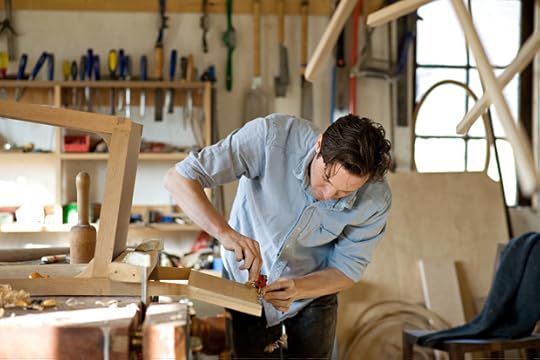
Image courtesy Christopher Kurtz, © Kirstie Tweed
As a young boy growing up in rural Missouri, the worlds of high art and design were not always accessible in the immediate landscape. However, I had the advantage of having two parents who are both artists and educators. They brought the vast world of “culture” to us, largely in the form of books and magazines.
My father subscribed to and collected Aperture magazine. I remember seeing it arrive in the mail, enclosed in its special cardboard container to protect its corners, instantly distinguished from the other mail. I always got excited when it came because it epitomized a window into something special. It was through this publication that I learned what the word “aperture” meant: my father explained that an aperture is an opening in a camera lens, but not limited to that—it could also mean a window. With clean hands, I was allowed to explore the pages of the magazine I was so intrigued by. I didn’t always understand what I was looking at, but I understood it in a primal way—drinking in all of the visual sophistication, and sometimes challenging imagery. The thickness of the paper, luscious inks, and slightly oversized format delivered the content in a powerful way that left a lasting impression on me.
I didn’t grow up to be a photographer, but I do work professionally in the fields of sculpture and studio furniture. I fondly look at Aperture as a formative object in my life—one that opened a window to the beautiful and strange world of images, and to large ideas.
—
Christopher Kurtz is a sculptor who lives in Accord, New York with his wife and daughter. He is represented by Hedge Gallery in San Francisco.
The post Aperture Matters: Christopher Kurtz appeared first on Aperture Foundation NY.
November 8, 2013
Call for Entries: Visible White Photo & Video Prize 2014

Visible White is an international call for photographic and video artworks curated by Paul di Felice and Marinella Paderni, which invites artists to reflect on the theme: You See Me. Personal Identities in the Digital Age.
Which values does artistic portrait photography have today in the digital age of social networks, in which everyone can become a do-it-yourself portrait photographer? The project explores new tendencies in contemporary, artistic portrait photography, which deals daily with the proliferation of DIY portraiture and the need to differentiate itself from amateur forms.
Twenty finalists will be chosen by a selection panel which includes:
Jim Casper, LensCulture, Paris; Clare Grafik, head of exhibitions at The Photographers’ Gallery, London; Hripsimé Visser, curator of photography at the Stedelijk Museum, Amsterdam; and Bas Vroege, director of Paradox, Edam, the Netherlands. An exhibition of the twenty finalists’ artworks will be shown at the Fondazione Studio Marangoni Gallery, Florence, and will run May 16–June 16, 2014.
Visible White is a collaboration between Celeste Network, Fondazione Studio Marangoni, Stedelijk Museum, Paradox, LensCulture, and The Photographers’ Gallery.
The call for entries closes February 28, 2014. For more details, visit the prize page.
The post Call for Entries: Visible White Photo & Video Prize 2014 appeared first on Aperture Foundation NY.
November 5, 2013
Lesley A. Martin & Denise Wolff: What Makes a Book Work?
a:visited {color:#000000;} /* visited link */
a:hover {color:#FF00FF;} /* mouse over link */
a:active {color:#000000;} /* selected link */
What makes a book work? Why publish books? What is a book’s unique function? Lesley A. Martin and Denise Wolff, Aperture Foundation book publisher and editor, provide the answers during a two-day intensive workshop for photographers who are thinking about making a book. The workshop will map the contemporary landscape of publishing and trace the varied steps toward realizing a finished publication, including editing and sequencing. It will open with a discussion of publishing today, then take participants behind the scenes of a few examples of successful projects. Delving deeper, the workshop will include in-class editing and sequencing exercises. Martin and Wolff will address both the conceptual and technical concerns involved in editing a large body of work, making a book dummy, and prepping for final publication. Discussions will cover working with a collaborative team and the relationship between editing, design, and book production. Students are encouraged to participate in the discussions and bring their own book-projects-in-progress for in-class critique and feedback. Lunch will be served.
Lesley A. Martin is publisher of Aperture Foundation’s book program and of The PhotoBook Review. Her writing on photography has been published in Aperture, American Photo, Stay Flat, and Foam, among other publications, and she has edited over eighty books of photography, including Reflex: A Vik Muniz Primer; On the Beach, by Richard Misrach; Penelope Umbrico: Photographs; and Ametsuchi, by Rinko Kawauchi.
Denise Wolff is a photobook editor at Aperture, and is known for her work with both contemporary and historic photography. Prior to Aperture, she was the commissioning editor for photography at Phaidon. Throughout her career, she has had the opportunity to work on many beautiful books, including monographs with established photographers such as Roger Ballen, Mary Ellen Mark, Martin Parr, and Stephen Shore, as well as first books, retrospectives, and large survey anthologies on a variety of subjects—from portraiture to photographic albums.
Tuition: $500 ($450 for currently enrolled photography students and Aperture Patrons)
Saturday, January 18, 2:30 p.m.–5:00 p.m.
Sunday, January 19, 10 a.m.–5:00 p.m.
Aperture Foundation
547 West 27th Street, 4th Floor
New York, N.Y. 10001
Contact education@aperture.org with any questions.
Refund / Cancellation Policy for Aperture Workshops
All fees are non-refundable if you should choose to withdraw from a workshop less than one month prior to its start date unless we are able to fill your seat. In the event of a medical emergency, please provide a physician’s note stating the nature of the emergency, and Aperture will issue you a credit that can be applied to future workshops. Aperture reserves the right to cancel any workshop up to one week prior to the start date if the workshop is under-enrolled, in which case a full refund will be issued. A minimum of eight students is required to run a workshop.
The post Lesley A. Martin & Denise Wolff: What Makes a Book Work? appeared first on Aperture Foundation NY.
Shelby Lee Adams: Environmental Portraiture
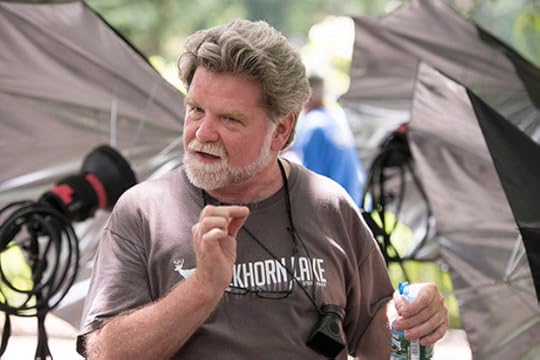

Photo by Linda Cicero


Photo by Shelby Lee Adams


Photo by Anne Connor

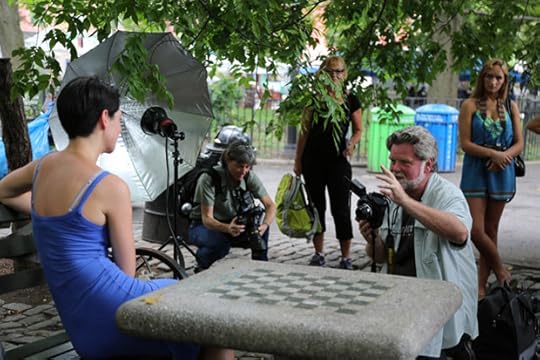
Photo by Elli Trier
We are pleased to report the success of Shelby Lee Adams’s environmental portraiture workshop, held on July 13 and 14, 2013. The course exposed students to the varying psychological and technical faculties of portraiture through the study of images and an on-location shoot in New York’s Tompkins Square Park. The resulting photographs stand as testament to the tenacious and astute observations made by this group of students over the course of the workshop.
From the students:
“This workshop exceeded my expectations. I had questions answered that I didn’t even know I had. . . . I will go home with many things to practice and dissect.”
“I never shot with studio lighting because I thought it would be too difficult. The workshop helped to ease that fear, and now I feel confident.”
From Adams:
“Tompkins Square Park was great and we had good weather. People were willing to pose for photos and a diverse range of people were present. The quality of the students was good, with at least three professional photographers, an economics professor, a published author of architecture books, a nationally recognized documentary filmmaker, an Appalachian photographer from West Virginia, and two people who flew in from Madison, Wisconsin. All eleven participated to the end.”


Adams, Lloyd Dean with Great-great Grand Baby, 2010.

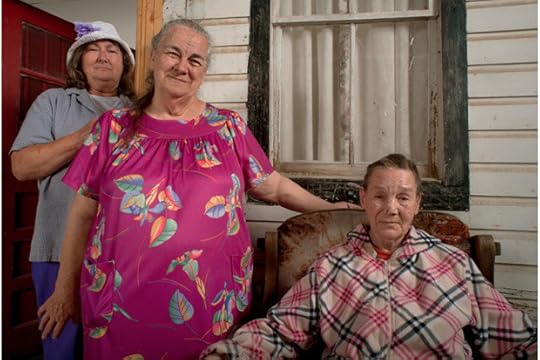
Adams, Three Church Ladies, 2010.

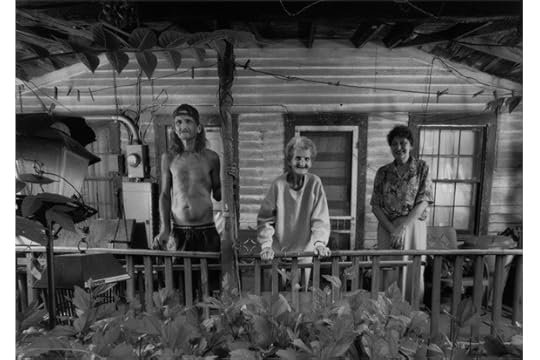
Adams, Hardburley Porch, 2004.


Adams, Robbie and Tyler on Wrecker, 2004.
“Seeing, connecting, and nurturing love while recalling and sharing the more difficult times requires a balanced perspective. It can be tender, or tough and thorny, but all parts are necessary to integrate visually and intellectually.” —Shelby Lee Adams, Salt and Truth (2011)
Join Shelby Lee Adams for a two-day intensive workshop that will explore the psychological, emotional, and technical aspects of portraiture, with special emphasis on photographing people in their environments. Learn to approach people with confidence as well as how to light environments skillfully and with a personal approach. For two days—with assistants, lighting equipment, models, and the instructor—the workshop will engage students in many lessons that they can apply to their own photographic pursuits.
Shelby Lee Adams was born in Hazard, Kentucky, in 1950, and educated at the Cleveland Institute of Art and Massachusetts College of Art. He received a John Simon Guggenheim Memorial Fellowship in 2010 and is the author of four photography books: Appalachian Portraits (1993), Appalachian Legacy (1998), Appalachian Lives (2003), and Salt and Truth (2011). His work has been supported by the National Endowment for the Arts, Polaroid Corporation, Elizabeth Firestone Graham Foundation, and Peter S. Reed Foundation. His photographs are in over sixty national and international collections, including the Musée de l’Elysée, Lausanne, Switzerland; National Gallery of Canada, Ottawa; Whitney Museum of American Art, New York; and Amon Carter Museum, Fort Worth, Texas. His work has appeared in such publications as Aperture, Smithsonian Magazine, New York Times, Mother Jones, and Black and White magazine. He divides his time between the Berkshire Mountains and eastern Kentucky
Refund/Cancellation Policy for Aperture Workshops
All fees are nonrefundable if you withdraw from a workshop less than one month prior to its start date, unless we are able to fill your seat. In the event of a medical emergency, please provide a physician’s note stating the nature of the emergency, and Aperture will issue you a credit that can be applied to future workshops. Aperture reserves the right to cancel any workshop up to one week prior to the start date if the workshop is under-enrolled, in which case a full refund will be issued. A minimum of eight students is required to run a workshop.
The post Shelby Lee Adams: Environmental Portraiture appeared first on Aperture Foundation NY.
October 31, 2013
Aperture at Paris Photo, 11.14–17
Thursday, November 14 – Sunday, November 17, visit Aperture at booth EE10 at Paris Photo, the leading international fair dedicated to nineteenth-century, modernist, and contemporary photography. Throughout the weekend, join us for book signings and the announcement of the winners of The Paris Photo–Aperture Foundation PhotoBook Awards on Friday, November 15, at 1:00 p.m.
Friday, November 15
12:30 p.m.: The Paris Photo–Aperture Foundation PhotoBook Awards shortlist signing
3:00 p.m.: Sketch of Paris, J.H. Engström
3:30 p.m.: Paris–New York–Shanghai, Hans Eijkelboom
4:00 p.m.: The Sochi Project: An Atlas of War and Tourism in the Caucasus, Rob Hornstra
5:00 p.m.: The Non-Conformists, Martin Parr
Saturday, November 16
1:00 p.m.: Legacy and The Garden at Orgeval, Joel Meyerowitz
2:00 p.m.: Site Specific, Olivo Barbieri
3:00 p.m.: Ametsuchi, Rinko Kawauchi
4:00 p.m.: City Stages, Matthew Pillsbury
For ticketing information, visit parisphoto.com.
October 30, 2013
Recap: Aperture 1/1 Benefit & Auction
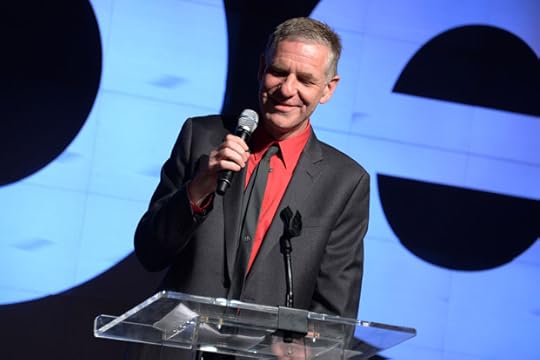

Aperture 1/1 Benefit & Auction ©Patrick McMullan, Clint Spaulding

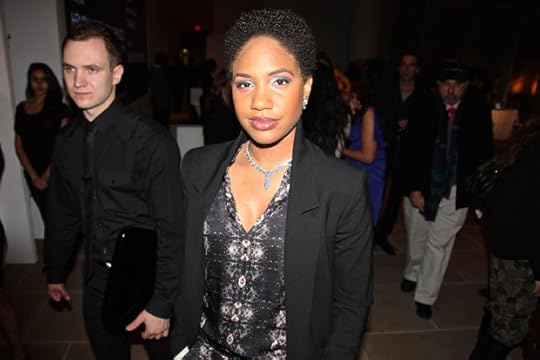
Aperture 1/1 Benefit & Auction © Zac Sebastian

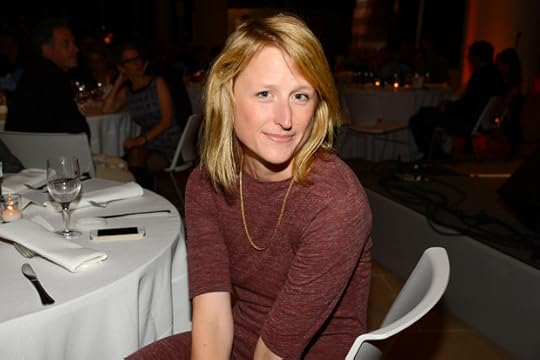
Aperture 1/1 Benefit & Auction ©Patrick McMullan, Clint Spaulding


Aperture 1/1 Benefit & Auction at IAC HQ, New York

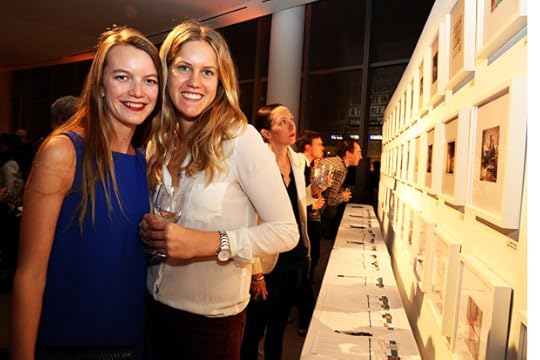
Aperture 1/1 Benefit & Auction at IAC HQ, New York


Aperture 1/1 Benefit & Auction at IAC HQ, New York

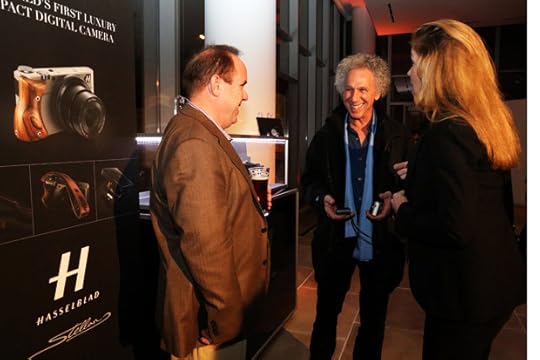
Aperture 1/1 Benefit & Auction at IAC HQ, New York

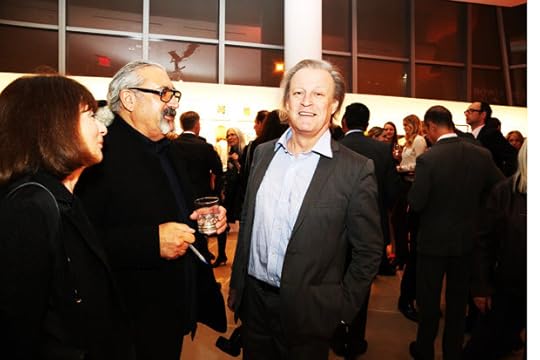
Aperture 1/1 Benefit & Auction at IAC HQ, New York


Aperture 1/1 Benefit & Auction at IAC HQ, New York

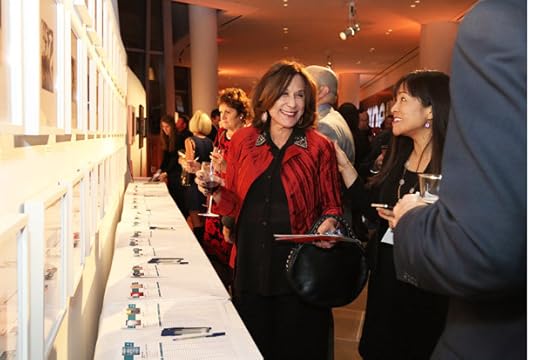
Aperture 1/1 Benefit & Auction at IAC HQ, New York

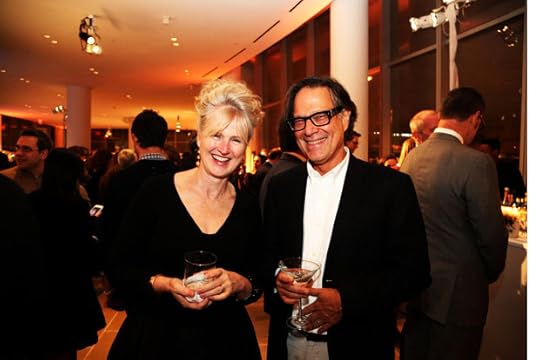
Aperture 1/1 Benefit & Auction at IAC HQ, New York

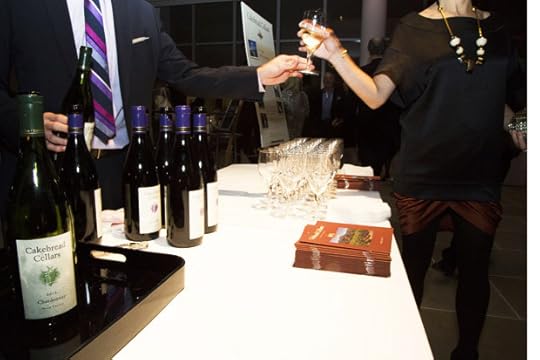
Aperture 1/1 Benefit & Auction at IAC HQ, New York

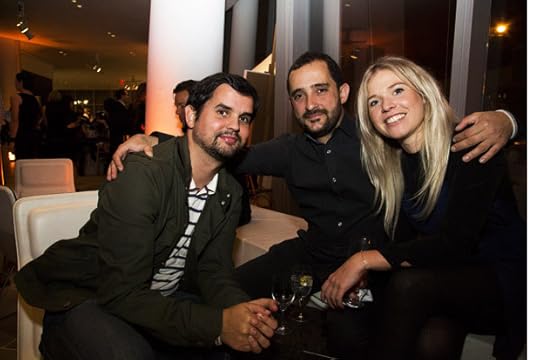
Aperture 1/1 Benefit & Auction at IAC HQ, New York


Aperture 1/1 Benefit & Auction at IAC HQ, New York

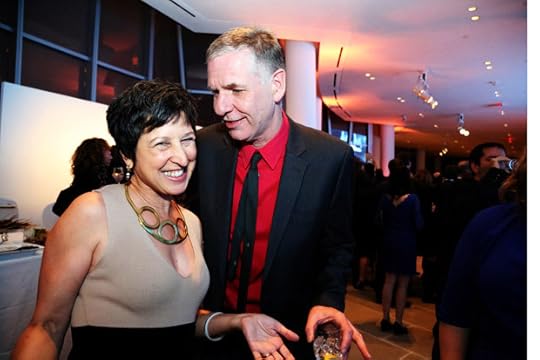
Aperture 1/1 Benefit & Auction at IAC HQ, New York


Aperture 1/1 Benefit & Auction at IAC HQ, New York

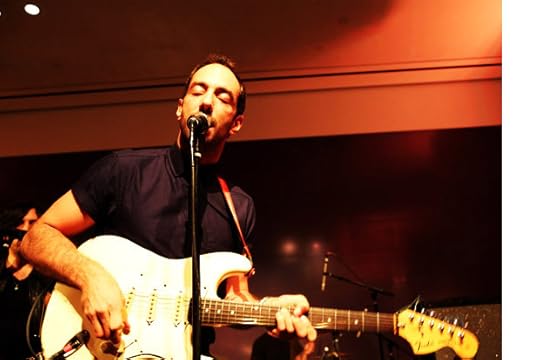
Aperture 1/1 Benefit & Auction at IAC HQ, New York


Aperture 1/1 Benefit & Auction at IAC HQ, New York


Aperture 1/1 Benefit & Auction at IAC HQ, New York

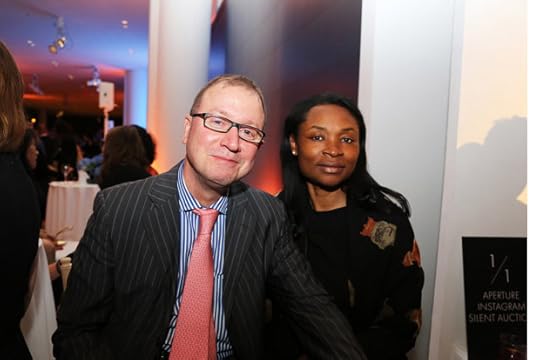
Aperture 1/1 Benefit & Auction at IAC HQ, New York

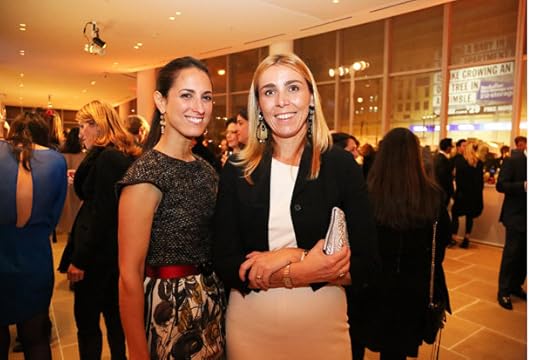
Aperture 1/1 Benefit & Auction at IAC HQ, New York

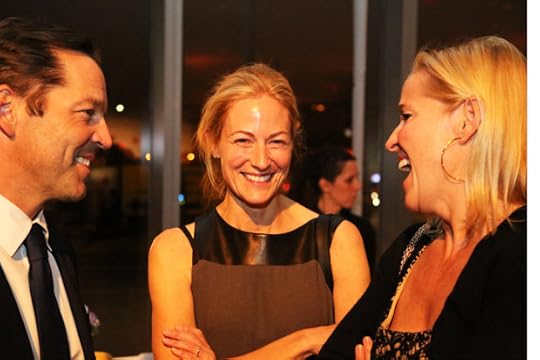
Aperture 1/1 Benefit & Auction at IAC HQ, New York

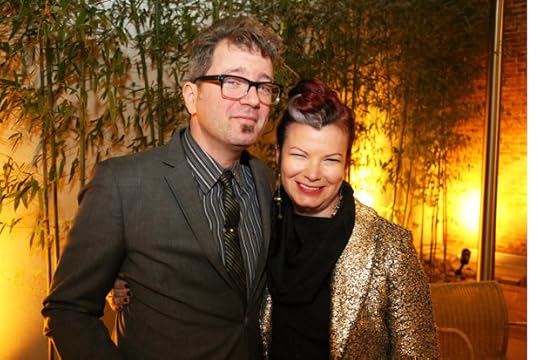
Aperture 1/1 Benefit & Auction at IAC HQ, New York

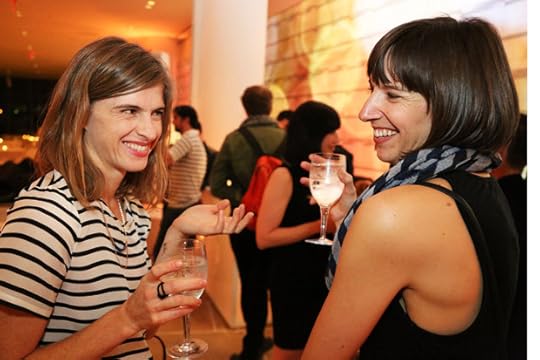
Aperture 1/1 Benefit & Auction at IAC HQ, New York


Aperture 1/1 Benefit & Auction at IAC HQ, New York


Aperture 1/1 Benefit & Auction at IAC HQ, New York

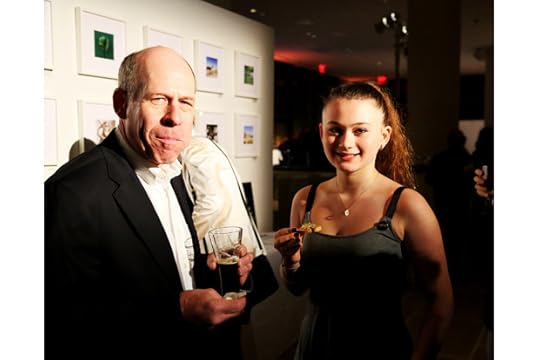
Aperture 1/1 Benefit & Auction at IAC HQ, New York


Aperture 1/1 Benefit & Auction at IAC HQ, New York


Aperture 1/1 Benefit & Auction at IAC HQ, New York

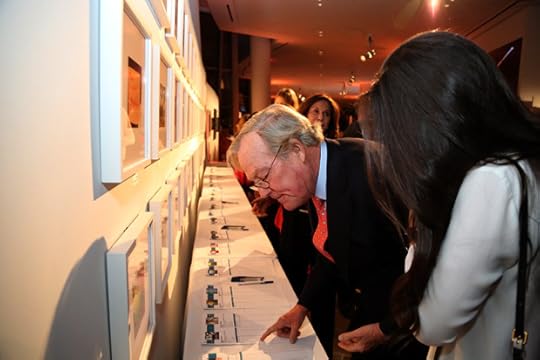
Aperture 1/1 Benefit & Auction at IAC HQ, New York


Aperture 1/1 Benefit & Auction at IAC HQ, New York


Aperture 1/1 Benefit & Auction at IAC HQ, New York


Aperture 1/1 Benefit & Auction at IAC HQ, New York


Aperture 1/1 Benefit & Auction at IAC HQ, New York

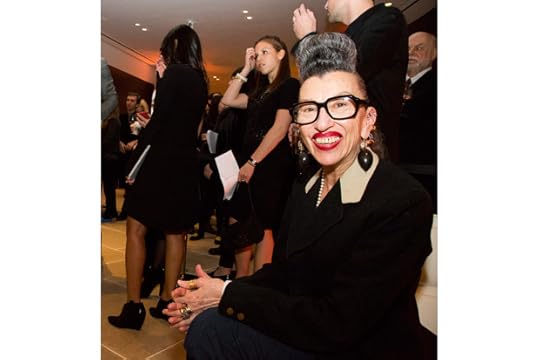
Aperture 1/1 Benefit & Auction at IAC HQ, New York


Aperture 1/1 Benefit & Auction at IAC HQ, New York

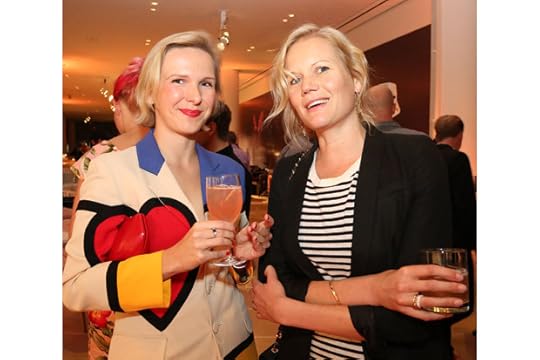
Aperture 1/1 Benefit & Auction at IAC HQ, New York


Aperture 1/1 Benefit & Auction ©Patrick McMullan, Clint Spaulding


Aperture 1/1 Benefit & Auction ©Patrick McMullan, Clint Spaulding

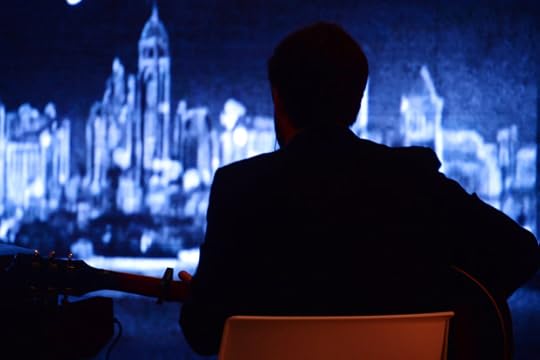
Aperture 1/1 Benefit & Auction ©Patrick McMullan, Clint Spaulding

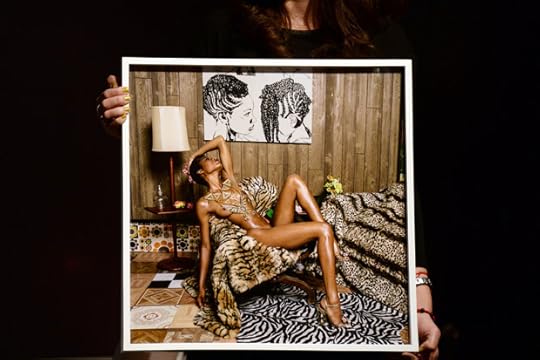
Aperture 1/1 Benefit & Auction ©Patrick McMullan, Clint Spaulding


Aperture 1/1 Benefit & Auction at IAC HQ, New York


Aperture 1/1 Benefit & Auction © Zac Sebastian


Aperture 1/1 Benefit & Auction © Zac Sebastian

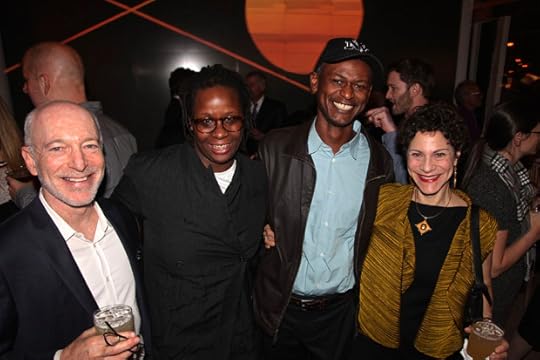
Aperture 1/1 Benefit & Auction © Zac Sebastian


Aperture 1/1 Benefit & Auction © Zac Sebastian
On Monday, October 28th, 2013, over 500 guests in the worlds of photography, art, fashion, media, and music gathered for the Aperture 1/1 Benefit and Auction, a one-of-a-kind party in support of Aperture Foundation’s education and visual-literacy programming. Headlining the event was Albert Hammond, Jr. performing songs from his new EP, AHJ. Other special guests included Henry Wolfe and Phil Carluzzo who performed an original score to Manhatta, the 1921 short film by Paul Strand and Charles Sheeler, and TAMARYN who performed a special guest DJ set. Throughout the night, a video installation created for Aperture by Trollbäck + Company lit up the room.
A live auction of 1/1 commissioned photographs was led by charity auctioneer CK Swett of Heritage Auctions, and included works by photographers Erwin Olaf, Mickalene Thomas, and Penelope Umbrico. Aperture’s Instagram silent auction was curated by Kathy Ryan, director of photography at the New York Times Magazine and featured over 80 works by notable figures such as Sam Falls, Alex Prager, Vik Muniz, and Stephen Shore, as well as actress Tilda Swinton and former MTV host Tabitha Soren.
The Aperture 1/1 Benefit and Auction was made possible by presenting sponsor Hasselblad, and the following in-kind support:
VIP Lounge presented in partnership with Hôtel Americano, featuring tastings by chef Joseph Buenconsejo
Spirits provided by Espolòn Tequila
Premium wine provided by Cakebread Cellars
Craft beer provided by SingleCut Beersmiths
Small plates provided by Canard, Inc.
Online auction partner: Artspace
Event photography and media sponsor: PatrickMcMullan.com
Aperture’s Instagram prints by: LTI Lightside Photographic Services
Additional support from Tekserve and Quantum Visual Imaging.
—
To view more images from the event visit PatrickMcMullan.com, search #ApertureBenefit on Instagram, or follow us at @aperturenyc.
Check out additional coverage of Aperture’s 1/1 Benefit & Auction via ARTINFO and Guest of a Guest.
October 25, 2013
A Conversation with Jakob Trollbäck
Swedish designer Jakob Trollbäck has been working in New York for twenty-two years. As founder and principal of the award-winning studio Trollbäck + Company, the self-taught designer is an industry leader in the creation of brand campaigns, digital experiences, and commercial advertising for a diverse range of clients.
For Aperture’s 1/1 Benefit & Auction on October 28, his studio will debut a custom installation occupying one of the world’s largest high-resolution video walls, located in the Frank Gehry-designed InterActiveCorps (IAC) headquarters in New York’s Chelsea neighborhood: a series of slow-moving, microscopic vignettes which examine a world of photography never before seen at this scale.
Jason Quincy Bailey recently spoke with Trollbäck about his journey in design, the role of photography in his work, and the bold visual program he has created for Aperture’s 1/1 Benefit & Auction.
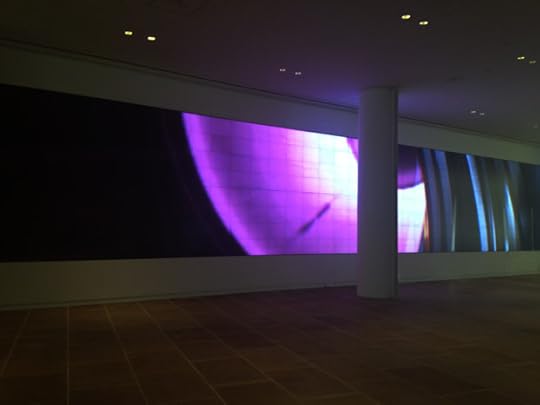
Installation view, IAC HQ, New York.
Jason Quincy Bailey: You have quite a diverse skill set, ranging from music to photography. Can you tell me a bit about your journey toward design?
Jakob Trollbäck: I was a DJ in Stockholm—I also had a record store and club. I started to create fliers for the club, and became interested in design by doing that. I bought a computer—a Mac, very early on—and started to play. And then I decided I would be a designer. I was kind of just like that. I bought some books on design and began imitating people I liked, and learned that way, like you learn to play the guitar.
I did that for a while, but didn’t get far in Stockholm because there is a strong focus on education, and I had none in graphic design. I thought America would be the land of opportunities, so I left and came here.
JQB: What did the landscape of design look like at that point? Clearly you didn’t get started doing what you’re known for now: digital experiences, motion graphics…
JT: I was fascinated by America and American design: art deco, film noir, Raymond Chandler, black-and-white movies. A lot of the design that I did was very filmic in that sense.
I had been here several years before I started my own company. For the first time, I felt I wanted to go back to my roots, and work with more European, Scandinavian thinking in my design—that’s why we have Josef Müller-Brockmann posters in the office. It was a change: from something that was very ornate, to then trying to find some truth, something real in the design—in the same way that Johann Sebastian Bach found truth in music, by going back to the building blocks of music. I wanted to find that in design.
JQB: I notice that in your work you play with the relationship between sound and the visual elements that you create. Does one “truth” inform the other? Or, vice-versa?
JT: I always try to find tension. I always look for moments. In music, that moment is often a buildup to something. All of a sudden you’re on your way—and there’s a surprise. I love the fact that music has these wonderful stories: it takes you somewhere, and then it gives you something else. It releases you, it lets you out, or it asks a question.
That interplay of surprise and delight…that’s something that I’m looking for in design, which was then enabled when I began to work with motion graphics. There you have a timeline, and you can do things that really set a trajectory to build the very particular moment that you are looking for.
JQB: Absolutely. It’s always surprising to see these auditory and visual streams guide each other in this very integral, very strategic way.
JT: Music has been so central for me since I was born, but it never seemed to me that it would be what I would do professionally. It was just a source of inspiration. I think that what I’m doing in motion is sort of a visual variation of doing music. It’s the same story, but you’re telling it with visuals instead of notes.
JQB: Do you see any relationship between your work and the world of photography? Does photography influence your process?
JT: Photography is actually the most important inspiration for a lot of the people in the studio, including myself. We’re looking for moments. We’re looking for a particular mood, we’re looking for the time when something happens. And you know, a great photographer does just that. It’s about finding the right mood, then finding the right time.
I had the privilege of working with Richard Avedon many years ago. He was shooting a jumping woman. It was amazing when I looked at the negative, because he caught this woman at the apex of the jump every single time. I mean, his timing was impeccable. I don’t really understand how it’s possible. A great photographer seems to know the moment before it happens, he needs to grab it when it happens. The sense of hunting for that moment, where everything aligns, that’s really powerful for me.
We look everywhere for inspiration: we look at art, feature films and documentaries, photography, industrial design, and architecture. A good analogy is Gerhard Richter’s way of working: he’s takes photographs of his motifs, and then translates those into paintings. That is when the magic happens, when you add your own interpretation.
JQB: Do you have any favorites in photography?
JT: There are so many. I had a period where I was very much into Thomas Struth and the Düsseldorf school. I like Ryan McGinley. I like his work because it’s very useful for us. There’s a lot of over-the-top exuberance in it that is also painted in a certain light. That is akin to what we’re doing.
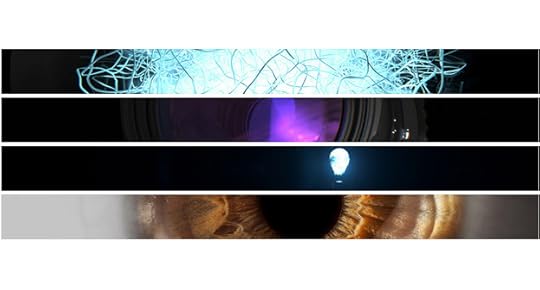
Installation detail. Image courtesy Lauren Espeseth/Cool Hunting.
JQB: You describe your upcoming installation at Aperture’s Benefit & Auction as “examining a world of photography never before seen at this scale.” What can our audience can expect to see?
JT: Yes. We’re excited about that. I’ve been a fan of Aperture for many, many years and wanted to have a deeper connection with the organization. This is a great opportunity for us to do that. What we’ve tried to do is to look at photography from another angle, to think about the peripheral things you may not always think about. We’ve been looking at the eye, at the lens, at the flashbulb, etc. We have done some pretty cool things with that and we’re very excited—it’s going to be beautiful.
JQB: Sounds exciting. I caught a little preview, but had no idea what I was looking at.
JT: It might have been my eye. We have twelve different eyes in one of the pieces. We shot them with a macro lens, and we were like an inch and a half away from the eye. It’s blown up across the whole 125-foot screen. I’m not sure what the scale is, but it’s big.
When you go that close you realize that people you’ve been thinking of as blue-eyed are actually more green-eyed. There’s an amazing amount of variation in the eyes when you’re that close.
JQB: So you got to know the people you work with much more intimately?
JT: We were actually thinking, maybe for our staff photos on our website, we’ll just have people’s eyes.
JQB: That’s a great idea. Everyone’s always looking for something unique, but ultimately they all just do photobooth photos.
JT: Yeah. It’s either that or naked photos.
—
Jason Quincy Bailey is the digital media producer for Aperture Foundation.
Find out more about the 1/1 Benefit & Auction and buy tickets here.
Documenting War: Peter van Agtmael in Conversation with Philip Gourevitch (Video)
On October 15, photographer Peter van Agtmael was joined in conversation by award-winning author, editor, and journalist Philip Gourevitch to discuss van Agtmael’s experiences shooting in the field, his most recent work, and his proposal for the W. Eugene Smith Grant in Humanistic Photography, for which he was the 2012 recipient. Prior to the discussion, van Agtmael presented a slideshow of his photographs, which document the consequences, both at home and abroad, of America’s wars. His work has earned him prominent distinctions, including the ICP Infinity Award for Young Photographers, a FOAM Talent selection, and a Pulitzer Center Grant. His work has been featured by media outlets such as TIME, Newsweek, Vanity Fair, Mother Jones, and the BBC.
This talk was part of the W. Eugene Smith Talks, a series of collaborations between the W. Eugene Smith Memorial Fund and Aperture Foundation, celebrating the legacy of W. Eugene Smith.
View “Documenting War: Peter van Agtmael in Conversation with Philip Gourevitch, Part 2, Part 3, & Part 4” on Vimeo.
—
Photography by Peter van Agtmael is featured in The New York Times Magazine Photographs (Aperture, 2012). The New York Times Magazine Photographs
The New York Times Magazine Photographs
$75.00
Aperture's Blog
- Aperture's profile
- 21 followers



